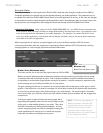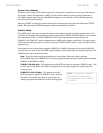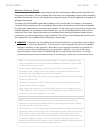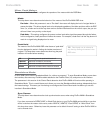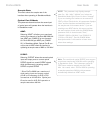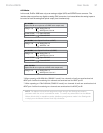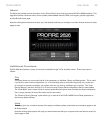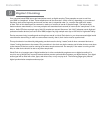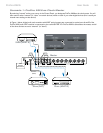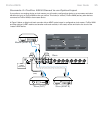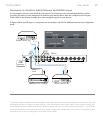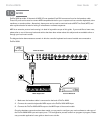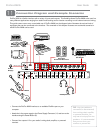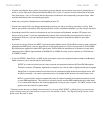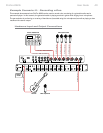
User Guide 33ProFire 2626
Digital Clocking
Your computer-based DAW stores and manipulates music as digital samples. Those samples are sent to and from
your DAW as “snapshots” of data. These snapshots are all the same size—16-bit or 24-bit, depending on your selected
resolution—each with a beginning and an end, and are sent in sequential order (i.e., one after the other) as a stream
of data. Think of this data stream as a sentence, made up of a series of words of identical length. The rate at which
these words are transmitted (i.e., how many samples are transmitted each second) is known as the “sample rate” of the
device. Audio CDs have a sample rate of 44,100 samples per second (known as “44.1 kHz”) whereas certain high-end
professional audio devices (such as ProFire 2626) support very high sample rates (up to 192 kHz) for high audio fidelity.
Precise, accurate timing in sending and receiving those words is critical. Each device in your interconnected digital world
must share the same timing in order to communicate correctly—that is, their clocks must be synchronized.
This synchronization is achieved by designating one device as the timing “master,” and all other connected devices as
“slaves,” locking the slaves to the master. Only one device in the chain can be the master, and all other devices must slave
to that master. All devices must be running at the same sample rate as well. For example, if the master is running at 44.1
kHz, no other device should be set to any other sample rate.
Word Clock is an important part of digital studios but is often overlooked by engineers new to digital recording. It is
crucial to set up Word Clock correctly because without precise synchronization between your digital devices, your digital
audio signal will be filled with clicks, pops, and white noise, or may not play at all. The following pages give practical
digital synchronization examples and setup tips.
9



